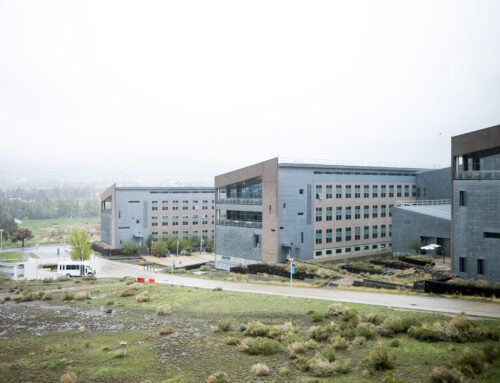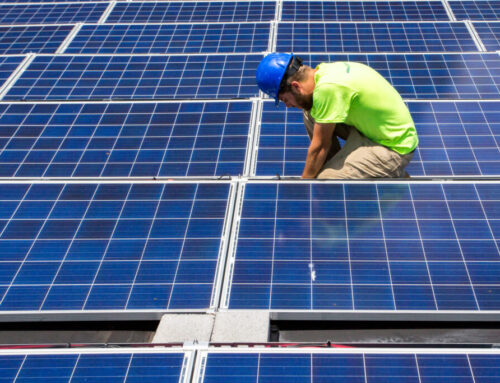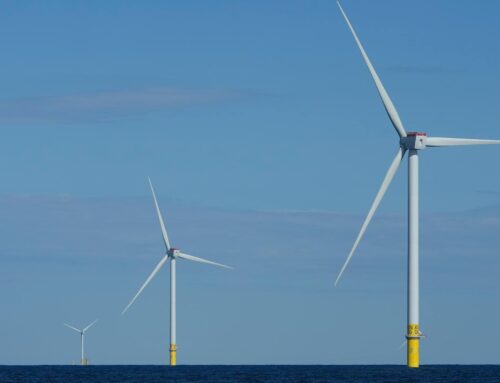Pittsburgh International Airport expands solar field
May 5, 2025
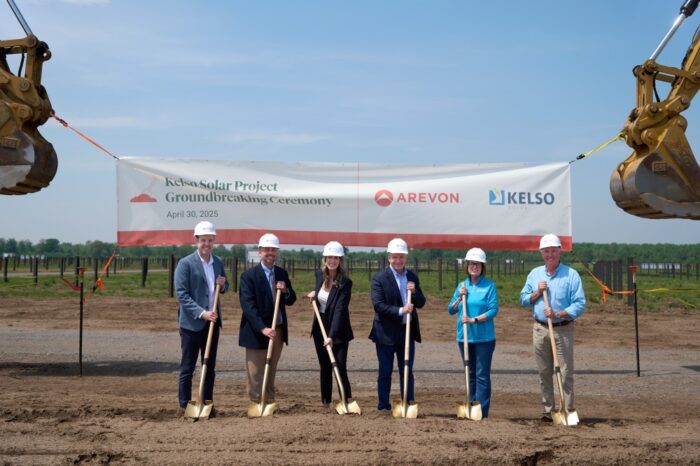
Cool factor: Kelso Solar is Arevon’s first utility-scale renewable energy project in Missouri. The development and construction of the more than $500 million project have resulted in a significant increase in economic activity in Scott County and the surrounding areas. During peak construction, Kelso Solar will employ more than 450 personnel, primarily sourced from local labor to build the project. Both phases are being constructed by Primoris Services Corporation’s Renewable Energy business, a leading provider of engineering, procurement, and construction services to the power generation industry. Local establishments such as restaurants, hotels, and shops have positively benefitted from the construction activities in the area. Throughout its multidecade operations, Kelso Solar is estimated to disburse more than $34 million to local governments, supporting schools, infrastructure, and first responders.
“Kelso Solar marks Arevon’s entrance into Missouri and when operational, will boost the state’s installed solar capacity by almost 50 percent. This major project furthers Arevon’s growing presence in the Midwest region of the United States, which is a priority market for our company’s development activities,” said Kevin Smith, CEO at Arevon. “Celebrating the project’s construction alongside our partners and stakeholders also gives us the opportunity to recognize the immense economic benefits the project provides. I am grateful to Scott County for its partnership as well as its leadership in expanding homegrown and cost-effective energy in the state.”
Seven solar energy systems have been installed and are now operating at six of Connecticut’s correctional facilities. The suite of projects will generate millions in cost savings while delivering clean, renewable energy to the facilities. Because correctional facilities operate nonstop 365 days a year, they are among the largest consumers of energy of all state-owned facilities.
“Installing solar energy systems at correctional facilities is a way that we can deliver cost savings in the operations of state government while also reducing our carbon footprint,” said Gov. Ned Lamont. “Correctional facilities provide a necessary public safety service for our communities, and their around-the-clock operations require a significant amount of energy to function. I am glad that we could get these projects completed and that our correctional facilities can begin taking advantage of the benefits of solar energy.”
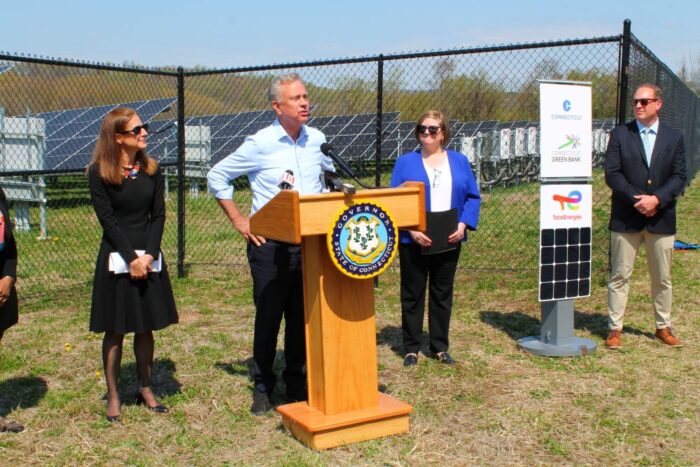
Cool factor: The seven systems will collectively deliver 8.3 MW of renewable energy to the correctional facilities, saving the state more than $11 million in energy costs over the lifetime of the panels. The projects are a collaboration between the Connecticut Department of Correction (DOC) and the Connecticut Department of Administrative Services (DAS), along with the Connecticut Green Bank and TotalEnergies, a global integrated energy company. They were financed by the Connecticut Green Bank in partnership with TotalEnergies. The company will own, operate, and maintain the systems through a power purchase agreement executed by DAS.
The correctional facilities utilizing these solar energy systems include:
- Cheshire Correctional Institution, Cheshire (2.4 MW)
- Enfield Correctional Institution, Enfield (181 kW)
- Manson Youth Institution, Cheshire (2.2 MW)
- Osborn Correctional Institution, Somers (2.2 MW)
- Robinson Correctional Institution A, Enfield (83 kW)
- Robinson Correctional Institution B, Enfield (167 kW)
- Willard Correctional Institution, Enfield (1 MW)
Ameresco Inc. has completed a groundbreaking solar array and battery storage project at Southwest Wisconsin Technical College, the winner of the 2025 Aspen Prize for Community College Excellence. This marks the first such project in the college’s history and represents a significant step forward in the institution’s commitment to sustainability and energy efficiency.
Southwest Tech contracted with Ameresco to develop a 10-year Comprehensive Energy Plan. The plan, which was fully completed by January 2024, outlines a path to achieve a 62 percent reduction in building energy use and a 100 percent reduction in greenhouse gas emissions over the next decade through four primary strategies: electrification of gas-fired equipment, lighting upgrades and controls, HVAC control strategies, and solar installations.
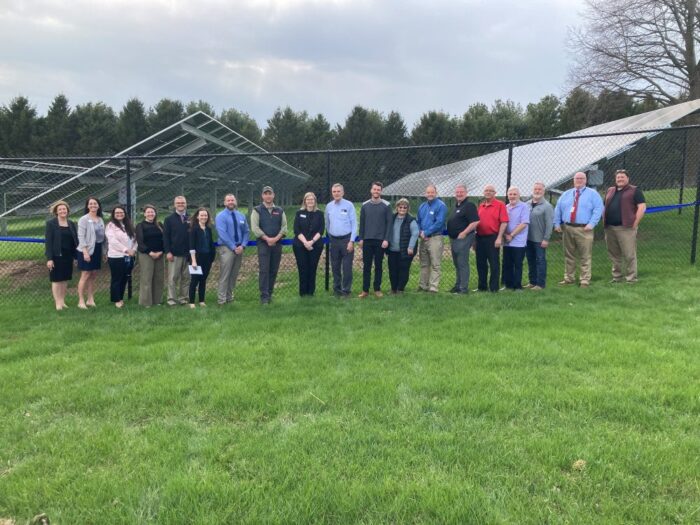
Cool factor: The $1.6 million design-build project includes a 300 kW solar array and a 125 kW battery storage system, installed in an area behind the Knox Learning Center. The electricity produced by the solar array will be used exclusively for Building 400, one of the most populated buildings on campus during the summer. The system is expected to produce approximately 352,710 kWh, or approximately 60% of the building’s electricity, saving the college approximately $30,000 per year in utility costs. In the event of an outage, the combination of the solar and battery energy storage system was designed to provide a resilient supply of energy to the student services building on campus.
“This collaboration with Southwest Wisconsin Technical College is a shining example of how renewable energy solutions can be seamlessly integrated into educational institutions,” said Lou Maltezos, president — Central & Western USA, Canada Regions at Ameresco. “By harnessing the power of solar energy and advanced battery storage, we are not only reducing the college’s carbon footprint but also setting a precedent for other institutions to follow. We are proud to support Southwest Wisconsin Technical College in their journey towards a greener and more energy-efficient future.”
Alliant Energy has begun operations at a 200 MW solar facility in Linn County, Iowa. The company also renamed the site to Pleasant Creek Solar after being known as Duane Arnold Solar during development and construction.
The project in Linn County — now owned by Alliant Energy — was developed by Duane Arnold Solar LLC, a subsidiary of NextEra Energy Resources LLC. Construction was completed in two phases. The first 50 MW began operating in March 2024 while the remaining 150 MW was placed into service in December 2024.
Cool factor: The 200 MW Pleasant Creek Solar facility — the largest solar field in Iowa — is expected to generate enough electricity to power approximately 40,000 homes annually. Combined with the Creston and Wever solar projects which Alliant Energy placed into service in 2024, the energy company is now using the sun to generate 400 MW of new solar energy resources in Iowa. These solar projects complement the approximately 1,300 MW of wind resources Alliant Energy owns and operates in the state.
“Pleasant Creek Solar exemplifies our ‘all of the above’ energy strategy, resulting in cost-effective energy resources that increase reliability for customers,” said Mayuri Farlinger, president of Alliant Energy’s Iowa energy company and vice president of operations. “Our solar projects and energy system investments drive economic growth by attracting businesses to communities, creating jobs and boosting tax revenues.”
Tags:commercial and industrial,Community Solar,utility-scale
Search
RECENT PRESS RELEASES
Related Post
